The entrance to Woodlands Station is a pure draught of old Singapore. Officials bark instructions as cars converge, disgorging passengers and luggage. It’s a rare bit of human chaos, conducted in the steamy 30 degrees that prevailed before the city-state became a frictionless, temperature-controlled pleasure dome.
By the time you make it up the stairs, however, you have travelled even further back in time. Parked along the concrete platform of the combined station and border checkpoint, surrounded by cyclone fence and razor wire, is contemporary luxury’s latest secret weapon, 15 carriages glittering like cloisonné jewel boxes in the sun.

Belmond’s Eastern & Oriental Express (E&O) is not in any sense a new train. Its relaunch a month ago, however, has been widely seen as further confirmation that high-end travel in general, and the luxury-train mini boom in particular, are back on track.
It’s a resurrection that started slowly and finished at lightning speed. Belmond, which owns luxury hotels, safari lodges, upmarket river barges and classic trains from the Venice Simplon-Orient-Express to Peru’s Andean Explorer, spent the early years of the pandemic undertaking mandatory checks and repairs to the E&O, and evaluating its options for when travel resumed.
That it had that breathing space came down to a miracle of timing. In the eat-or-be-eaten world of luxury brands pre-COVID, Belmond had been eyeing potential acquisitions such as Kangaroo Island’s Southern Ocean Lodge.
Instead, it was itself taken over by the French luxury behemoth LVMH for $US3.2 billion ($4.9 billion) in 2019.
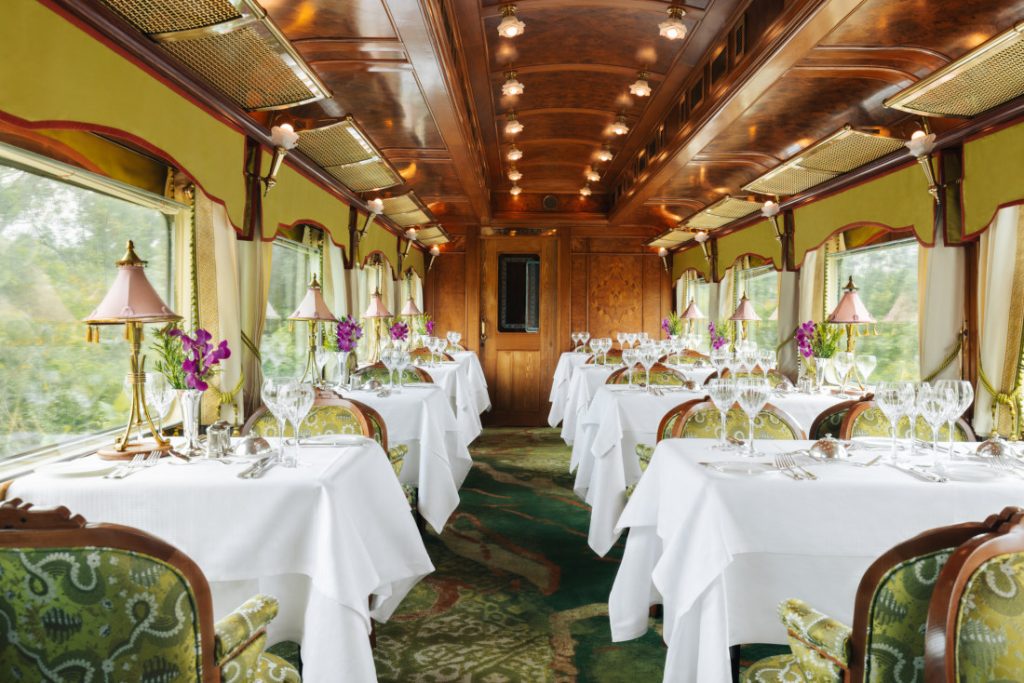
“That obviously was a saver for us,” the E&O’s affable French general manager, Valentin Waldman, says over a glass of wine as we sit in one of the train’s dining cars towards the end of what Belmond is billing as E&O’s inaugural trip post-launch.
“At the beginning of 2023, we were still unsure what we were going to do with this train,” he says.
“We had ideas but not definitive ideas. I said, ‘We have to restart this train, otherwise it may well be perceived as a dead business’. So we started putting a plan together. The money was there, given we were backed by LVMH. We just needed to convince them.”

E&O has come back with a renewed sense of purpose, its place in the market. The current configuration of 15 carriages compares with 22 pre-COVID and accommodates only 60 passengers, half the number carried previously. Since January, $US5 million has been spent on a soft refurbishment (fabrics and upholstery) by an in-house designer, and it is every bit as effective as it seems to have been cost-effective.
My State Cabin is a symphony of rosewood marquetry and brass, rippling green silk upholstery, cobalt velvet banquettes, dragons sprawling across cushions. Billed as timeless elegance, it evokes everything from old Shanghai to Murder on the Orient Express, the golden age of travel before it went mass.

And like everything aboard the E&O, it’s a conjurer’s trick. Built in Japan at the start of the 1970s, the carriages operated as New Zealand’s Silver Star Train, before being bought and refitted in the early 1990s by Belmond founder James Sherwood, a man who saw the experiential future – and the premium it would place on authenticity – early. That marquetry – like the bathroom and brass luggage racks that turn out to be as functional as they are evocative – dates from 30 years ago, rather than the 1930s. The E&O has been chasing, and improving upon, the past for decades.
The journey, too, has been refined to two seasonal Malaysian routes starting and ending in Singapore, minus the previous Singapore-Bangkok/Bangkok-Singapore options. The new summer option, titled Essence of Malaysia, takes you through Kuala Lumpur, Langkawi and Penang over four days, and features snorkelling, boat rides and picnics. Our three-night journey, Wild Malaysia (March to October), spans kilometres of palm plantations, immaculate towns, and jungle, including Taman Negara National Park.
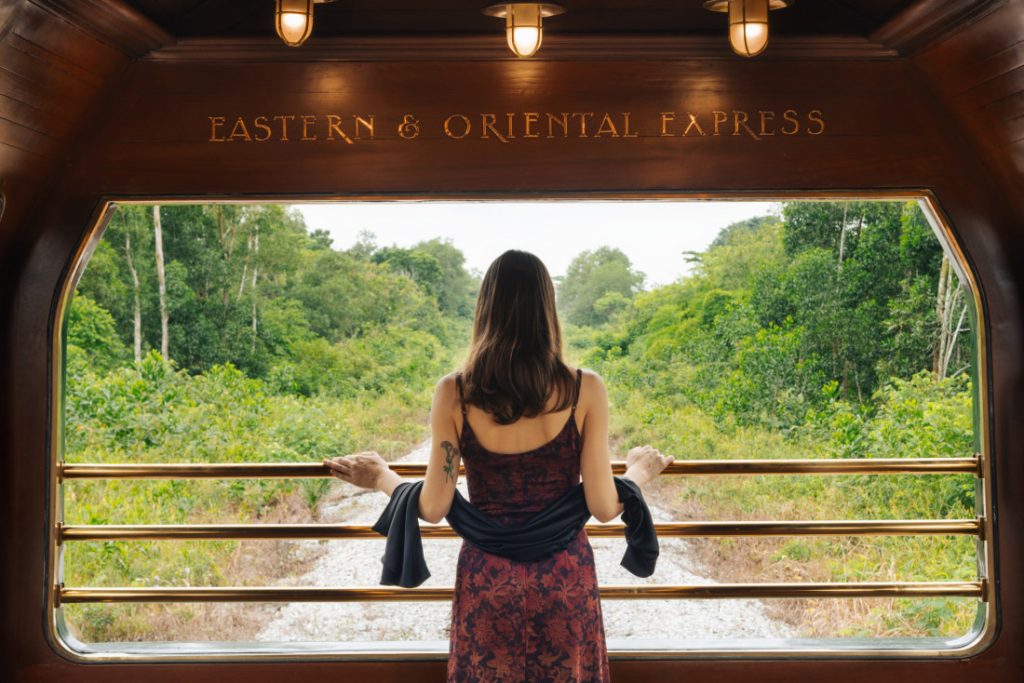
It’s only just spring when we arrive at Taman Negara in jeeps on day two, but it’s already so humid wildlife sightings are limited to a particularly languid langur and endangered (and sadly delicious) Kelah fish fighting the crystal-clear currents of the Relau River.
As we climb to the treetop walk, the rainforest is spectacular, electric with cicadas, the slow whoop of silver-handed gibbons somewhere in the distance. The sturdy new iron-and-steel construction, with its 20 observation towers and stations, opened last year, replacing what used to be the world’s longest rope bridge.
The outing ends with a visit to the nearby Save Wild Tigers conservancy, with which E&O has partnered to support a national symbol featured on everything from carriages to letterhead and bed linen, although the animal itself is so endangered the marketing material makes it clear we will not be seeing one.
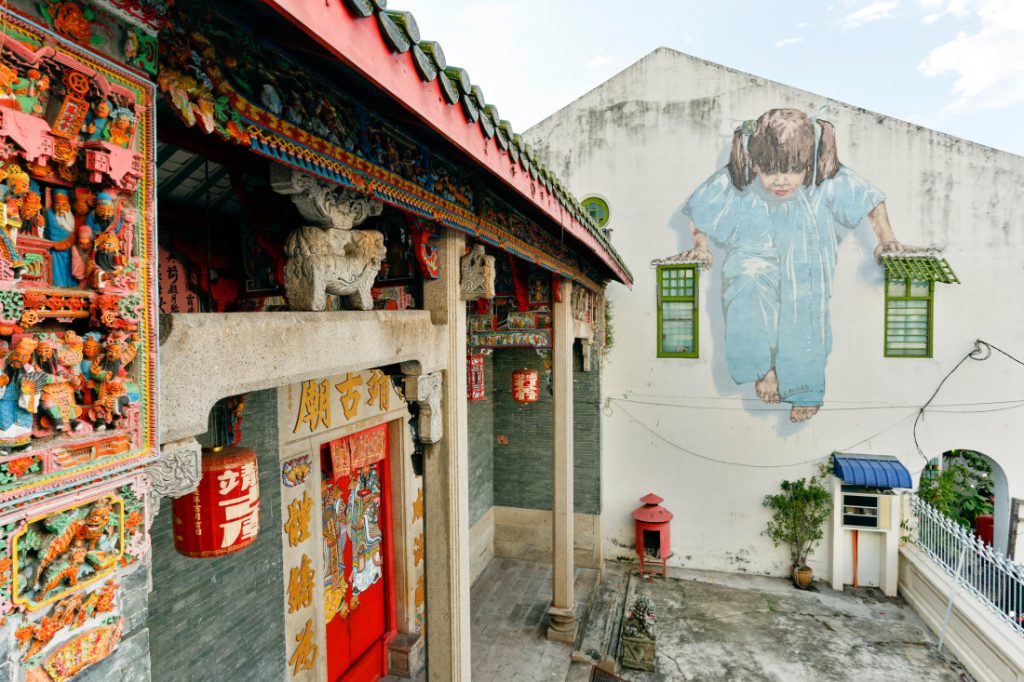
The punchline of the trip is George Town on Penang Island, reached the next day. Navigated on the back of motor scooters, the town’s UNESCO-listed Old Quarter might have been built for the purpose, with its fading shop and clan houses, frozen in time due to rent-control legislation that made development unprofitable, and now home to art and design collectives, antique shops and boutique hotels.
Over the past decade, the town has also undergone a street-art makeover spearheaded by the whimsical work of Lithuanian street artist Ernest Zacharevic and featuring murals by the likes of Russian street-art star Julia Volchkova.
The visit ends appropriately at George Town’s hyper-cool Hin Bus Depot. Behind its apparently derelict art-deco facade lurks a sprawling 5574-square-metre site housing a gallery, artist studios, vibrant weekend food market and a restaurant that started as a residency but proved too successful to close.
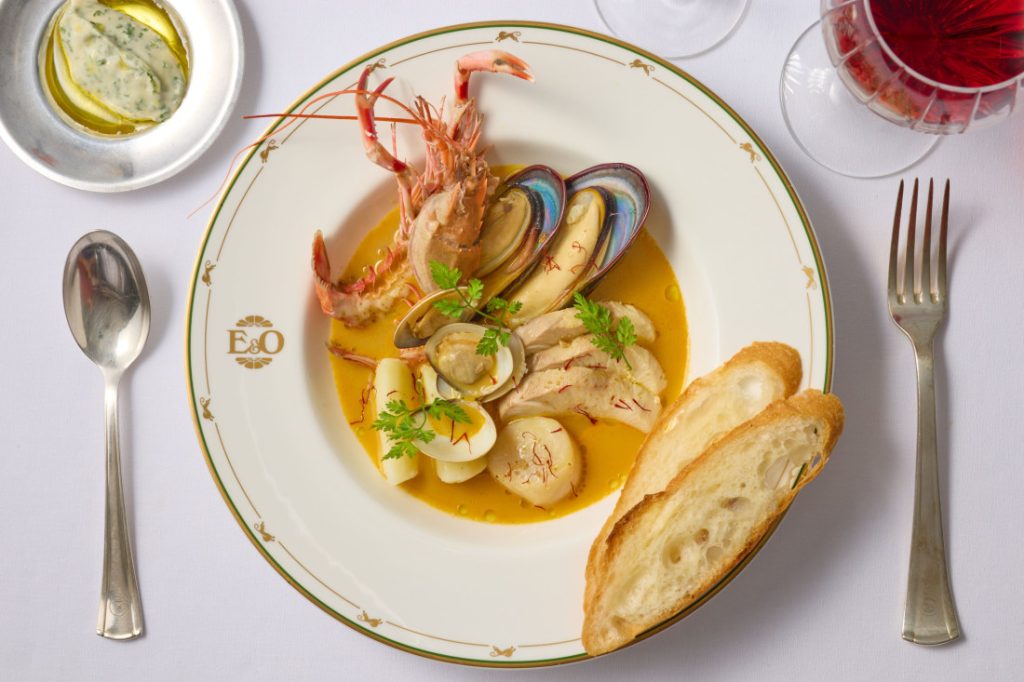
The E&O’s makeover has also included a major restaff. The Taiwanese, Michelin-starred fusionist André Chiang was selected as its new “culinary curator” from a field of six Asian stars due to his social media cut-through. Belmond is hoping he will help attract the ever-swelling cohort of wealthy locals as he conjures Malaysian delicacies from train kitchens only slightly more user-friendly than airline galleys.
“We want to be relevant to the regional market,” says Waldman. “We don’t want to be some sort of UFO in Asia, like our bubble for westerners. We want to expand and really be sure that we address the Asian market, the regional market.”
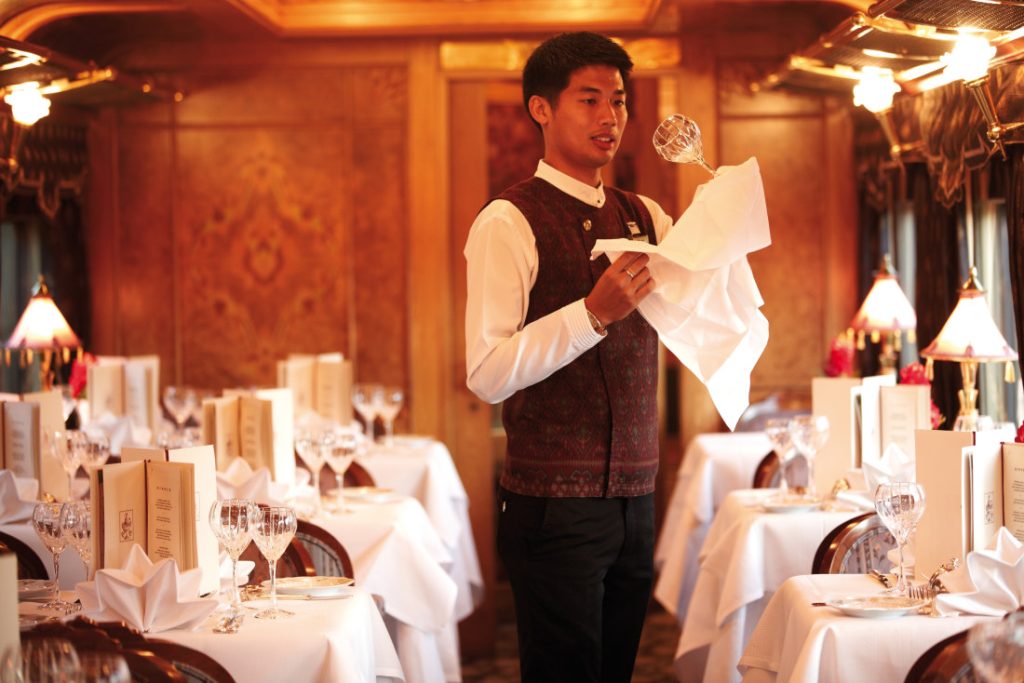
For the rest, the E&O has drawn on a rich local seam of COVID casualties. My excellent steward, Vishnu, turns out to be a veteran airline steward who first glimpsed E&O six months ago, parked in his hometown in Malaysia, as he delivered a pizza. “It was so beautiful I googled it as soon as I got home,” he tells me. “There was a notice they were looking for stewards, and I’d always wanted an adventure.”
The upshot is an authenticity – and an all-in-this-together enthusiasm – that is every bit as refreshing as the actual refresh.
It couldn’t be more useful, given the key metric for E&O’s inaugural trip is a very particular kind of customer satisfaction. “The idea we always went back too was this idea of brand desirability, product desirability,” Waldman says of the COVID rethink. “Why do you buy a Louis Vuitton bag? I mean there are probably other good reliable…,” he trails off. “In simple term, you are being asked at the end of a journey, ‘Would you recommend this to a friend?’ The key performance [indicator] is word of mouth, because if you are willing to recommend this, that means you have had a great experience.”
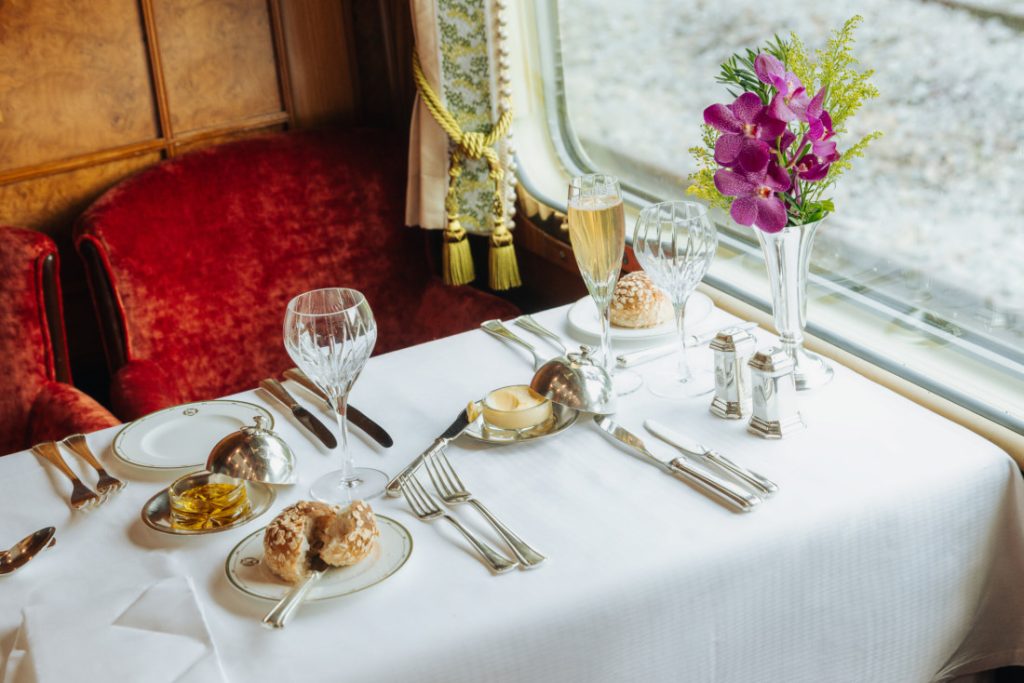
Priced from $US3410 a person (food and most drinks included) for an entry-level Pullman Cabin (the Presidential Suite is $US9450 per person, double occupancy), the Wild Malaysia journey is surprisingly affordable. Which hints at an important part of E&O’s role in the LVMH stable.
“Within the grand scheme of things, we have to remember we’re part of this big company,” Waldman says when questioned about the economics of the exercise. “Belmond may represent 1 per cent [of that] and [E&O] within Belmond may represent 1 per cent.
“LVMH acquired Belmond for the experiential aspect – obviously the uniqueness of the assets they were acquiring, but also the experience,” he continues. “Even in the stores you get a new layer of experiences. You can expect Dior, or Louis Vuitton, to take over the train maybe for one of their launches. So, this is a living platform, and a unique platform, for this brand to showcase.”
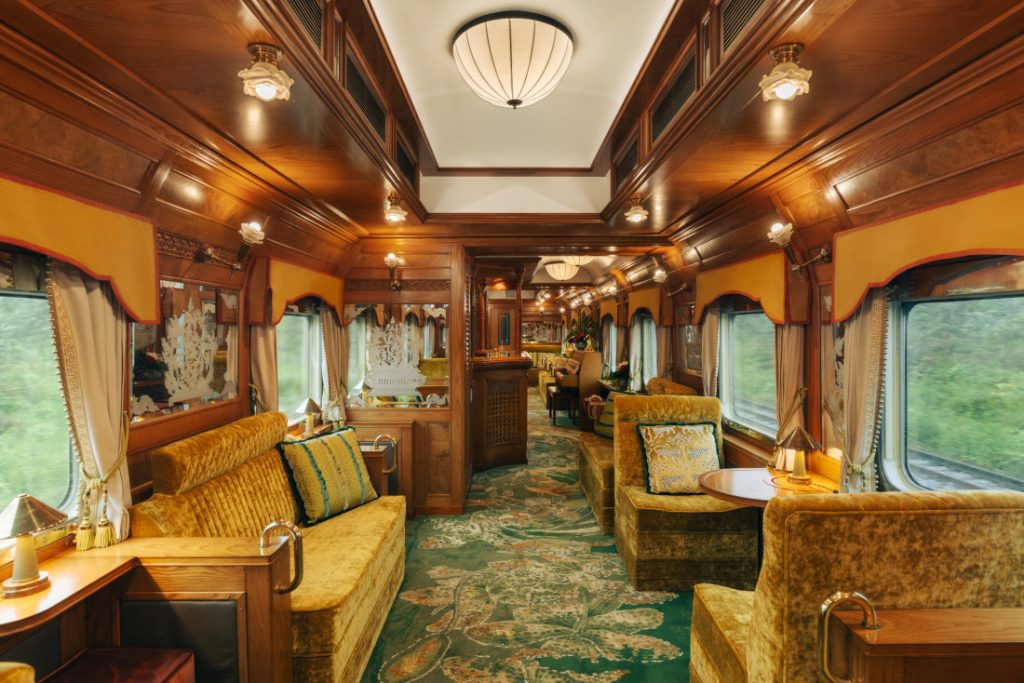
And livingness is indeed the essence of that platform. If train travel has taken over from cruising as the new slow-travel ideal, it’s because it’s an even more relentlessly analogue (the E&O has onboard Wi-Fi, but there’s not going to be a TV), even somatic experience. As the train rocks along at an entirely human speed, you literally feel every click and sway of Malaysia’s single-gauge track. Discovering your train legs in turn limbers you up, readies you for anything.
It’s one reason the piano bar, a halfway point to decompress post outings or pre-dinner, becomes the heart of the train. Slow down and you’ll cop an excellent negroni, or one of a menu of Wild Malaysia-themed cocktails. Later in the night, it becomes the rock on which many are happily wrecked over games or karaoke. Every trip is different, say the staff, because the passengers are different, cohere (or not) in their own particular way.

Personally, I prefer the stunning, open-air Observation Car at the tail of the train, where I join the trip’s sole smoker on the benches looking out. As Malaysia rolls past, I happily sniff cigarette fumes as evocative of times past as the train’s decor, as we travel forward together, and back.
The writer travelled as a guest of Belmond.

